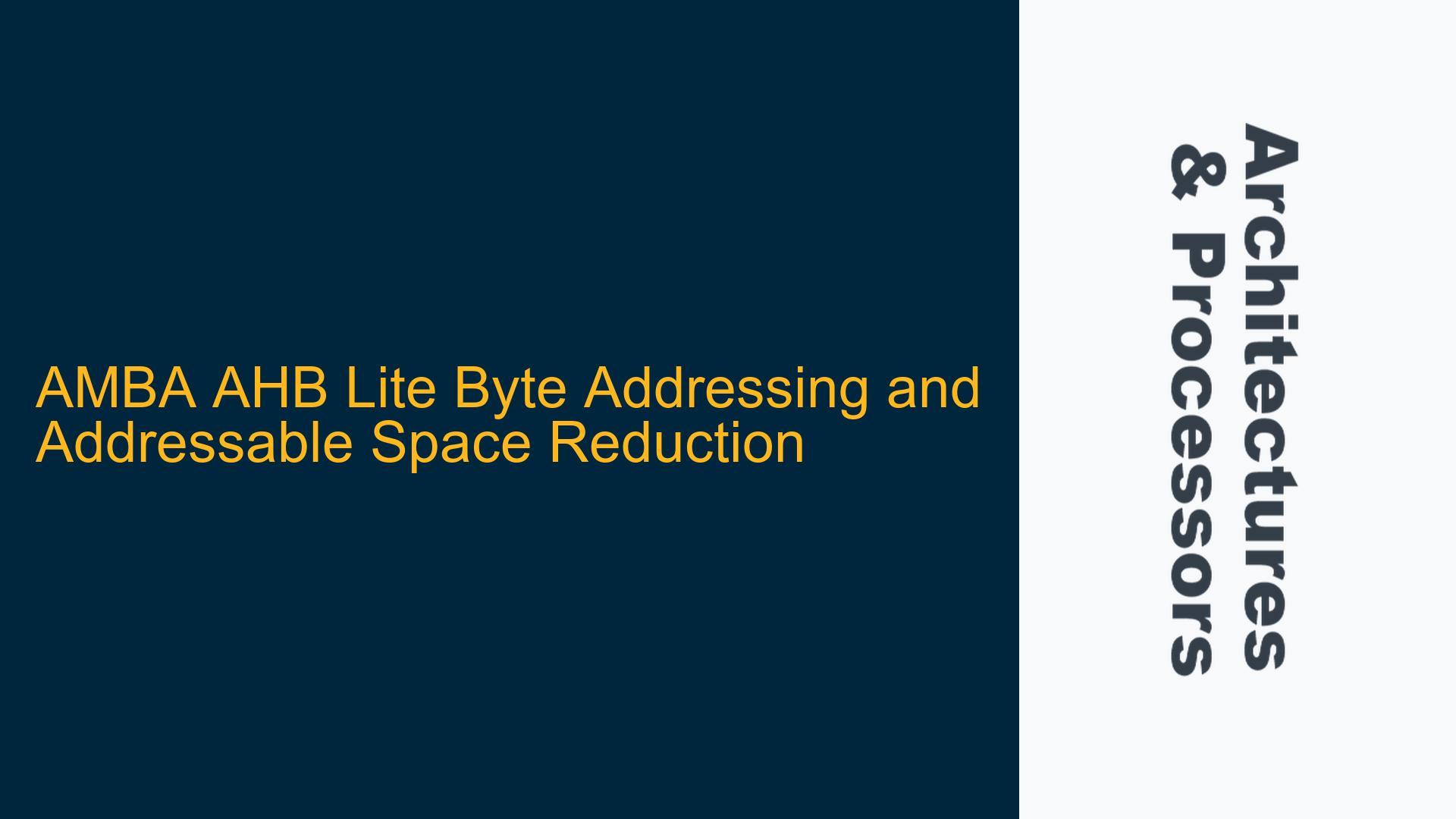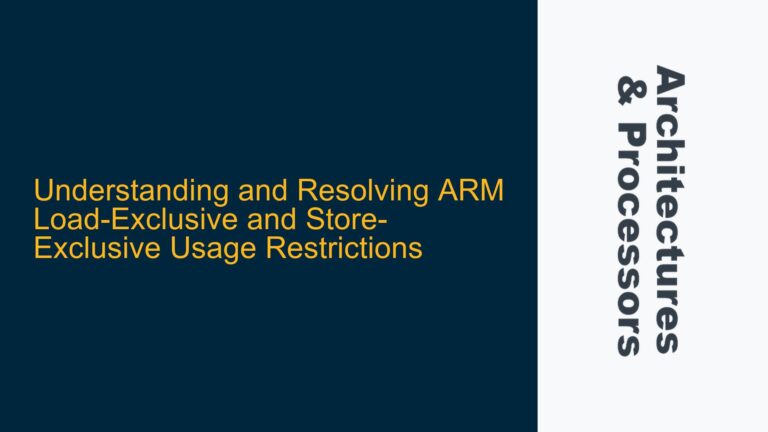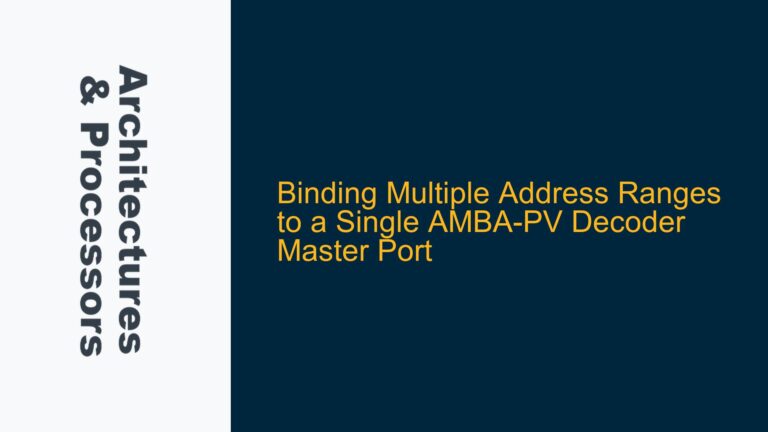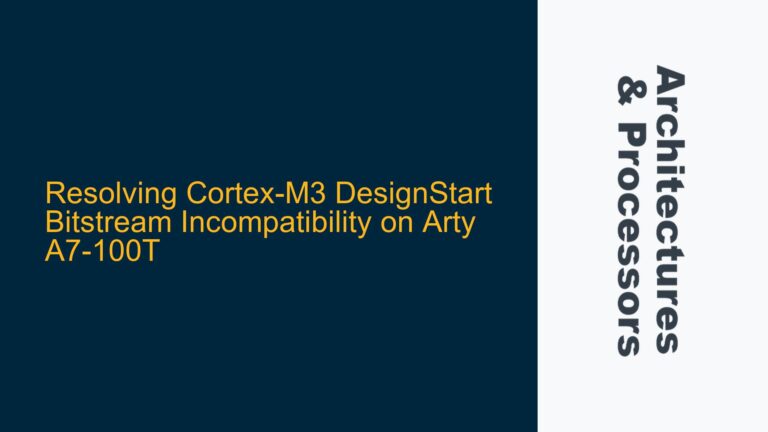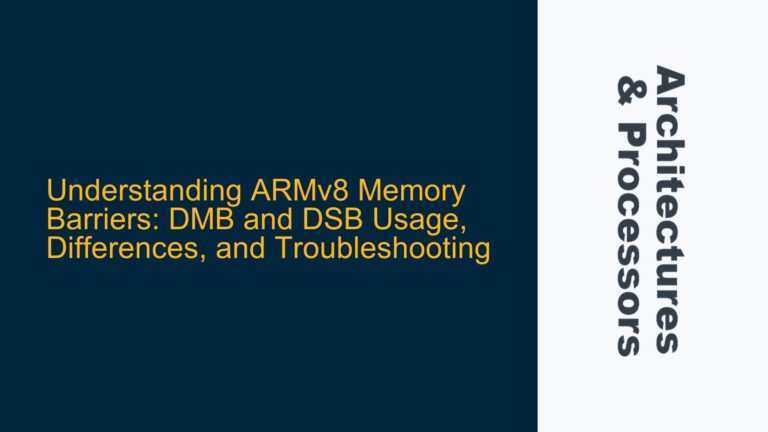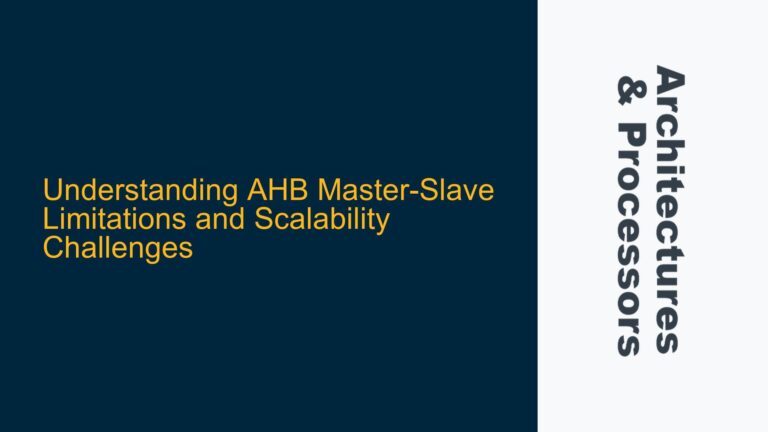AMBA AHB Lite Byte Addressing and Addressable Space Reduction
The AMBA AHB Lite protocol is a widely used on-chip bus protocol in ARM-based SoC designs. One of its key features is its byte addressability, which allows for fine-grained memory access. However, this byte addressability introduces complexities when dealing with data transfers of less than the full bus width, particularly in systems where the bus width is 32 bits or larger. The core issue revolves around how the addressable space is effectively reduced when performing byte-sized transfers, and how the address bits (specifically HADDR[1:0] for a 32-bit bus) are used to select the appropriate byte lane on the data bus. This discussion delves into the technical nuances of this mechanism, its implications for addressable space, and the challenges it poses for system designers, particularly when interfacing with peripherals that have different data width requirements.
Byte Addressing Mechanism and Addressable Space Constraints
The AMBA AHB Lite protocol supports byte addressing, meaning that each byte in the memory space can be individually accessed. For a 32-bit bus, the address bus (HADDR) is 32 bits wide, theoretically allowing access to a 4GB address space (2^32 bytes). However, when performing byte-sized transfers, the lower two bits of the address (HADDR[1:0]) are used to select the specific byte within the 32-bit word. This means that the effective addressable space for byte transfers is reduced.
For example, consider a system with a 32-bit data bus. The address bus HADDR[31:0] can address 4GB of memory. However, when performing a byte transfer, HADDR[1:0] is used to select one of the four bytes within the 32-bit word. This implies that the upper 30 bits of the address (HADDR[31:2]) are used to select the 32-bit word, and the lower two bits (HADDR[1:0]) are used to select the specific byte within that word. As a result, the effective addressable space for byte transfers is reduced to 1GB (2^30 words), with each word containing four addressable bytes.
This reduction in addressable space is a direct consequence of the byte addressing mechanism. The protocol requires that the address bits used for byte selection (HADDR[1:0]) be masked out when determining the word address. This masking effectively reduces the number of unique addresses that can be used to access individual words, thereby reducing the overall addressable space for byte transfers.
Implications for Peripheral Integration and Data Width Mismatch
The reduction in addressable space for byte transfers has significant implications for peripheral integration, particularly when interfacing with peripherals that have different data width requirements. Consider the case of an I2C-to-AHB Lite bridge, where the I2C interface operates with 8-bit or 16-bit data transfers, while the AHB Lite interface operates with 32-bit data transfers. The bridge must be able to map the narrower I2C data transfers to the wider AHB Lite data bus, while also ensuring that the correct byte lanes are selected based on the address.
In this scenario, the bridge must handle the address translation and byte lane selection. For example, if the I2C interface performs an 8-bit transfer to a specific address, the bridge must map this address to the appropriate 32-bit word address on the AHB Lite bus and set HADDR[1:0] to select the correct byte lane. This requires the bridge to internally manage the address translation, effectively expanding the address space to account for the byte selection bits.
Furthermore, the peripheral being accessed via the AHB Lite bus must support sub-word accesses (i.e., 8-bit or 16-bit transfers). If the peripheral only supports 32-bit accesses, it will return an error response (HRESP) for any sub-word access attempts. This creates a system design challenge, as the peripheral must be designed to support the expected access patterns from the bridge. If the peripheral does not support sub-word accesses, the system designer must either modify the peripheral design or implement additional logic in the bridge to handle the error responses and retry the accesses with the appropriate data width.
Addressing the Challenges: Design and Verification Strategies
To address the challenges posed by byte addressing and addressable space reduction in AMBA AHB Lite systems, several design and verification strategies can be employed. These strategies focus on ensuring correct address translation, byte lane selection, and peripheral compatibility.
Address Translation and Byte Lane Selection
The first step in addressing the challenges is to implement correct address translation and byte lane selection logic in the bridge or interface logic. This logic must map the incoming address from the narrower data width interface (e.g., I2C) to the wider data width interface (e.g., AHB Lite), while also setting the appropriate byte selection bits (HADDR[1:0]). The following steps outline the process:
-
Address Mapping: The incoming address from the narrower interface must be mapped to the corresponding 32-bit word address on the AHB Lite bus. This involves dividing the incoming address by the number of bytes per word (e.g., 4 for a 32-bit bus) to determine the word address, and using the remainder to determine the byte selection bits.
-
Byte Lane Selection: The byte selection bits (HADDR[1:0]) must be set based on the remainder of the address division. For example, if the incoming address corresponds to the second byte in the 32-bit word, HADDR[1:0] should be set to 01.
-
Data Alignment: The data from the narrower interface must be aligned to the correct byte lane on the AHB Lite data bus. This involves shifting the data to the appropriate position within the 32-bit word before driving it onto the HWDATA bus.
Peripheral Compatibility and Error Handling
The second step is to ensure that the peripheral being accessed via the AHB Lite bus supports the expected access patterns. If the peripheral does not support sub-word accesses, the system designer must implement additional logic to handle error responses and retry the accesses with the appropriate data width. The following steps outline the process:
-
Peripheral Design Review: Review the peripheral design to determine whether it supports sub-word accesses. If the peripheral only supports 32-bit accesses, modifications may be required to support 8-bit or 16-bit accesses.
-
Error Handling Logic: Implement error handling logic in the bridge or interface logic to detect error responses (HRESP) from the peripheral. If an error response is detected, the logic should retry the access with the appropriate data width or handle the error in a way that is consistent with the system requirements.
-
Verification and Testing: Verify the address translation, byte lane selection, and error handling logic through simulation and testing. This includes testing all possible address and data width combinations to ensure correct operation under all conditions.
Verification Strategies
The final step is to implement comprehensive verification strategies to ensure the correctness of the design. This includes both functional verification and performance verification to ensure that the system meets its requirements. The following strategies can be employed:
-
Functional Verification: Use SystemVerilog and UVM to create a verification environment that tests all possible address and data width combinations. This includes testing the address translation, byte lane selection, and error handling logic to ensure correct operation under all conditions.
-
Performance Verification: Verify the performance of the system under different access patterns and data widths. This includes testing the system under high load conditions to ensure that it can handle the expected traffic without performance degradation.
-
Corner Case Testing: Test the system under corner case conditions, such as accessing the last byte in the address space or performing back-to-back sub-word accesses. This ensures that the system operates correctly under all conditions, including those that may not be encountered during normal operation.
Conclusion
The AMBA AHB Lite protocol’s byte addressing mechanism introduces complexities when dealing with byte-sized transfers, particularly in systems with a 32-bit or wider data bus. The reduction in addressable space for byte transfers, combined with the need for correct address translation and byte lane selection, poses significant challenges for system designers. However, by implementing appropriate design and verification strategies, these challenges can be effectively addressed, ensuring correct operation and compatibility with peripherals of different data widths. The key to success lies in a thorough understanding of the protocol, careful design of the address translation and byte lane selection logic, and comprehensive verification to ensure correct operation under all conditions.
